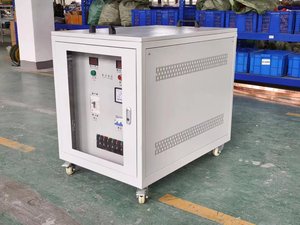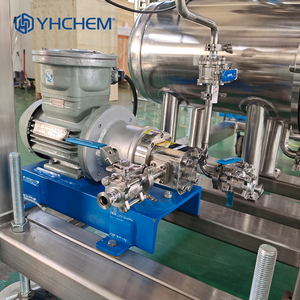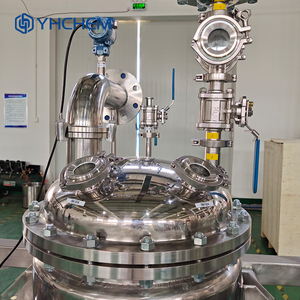
All categories
Featured selections
Trade Assurance
Buyer Central
Help Center
Get the app
Become a supplier

(8855 products available)
























A vertical two-phase separator is a pressure vessel used to separate gas from liquid. It removes gas bubbles from liquid (or oil) and separates them into gas and liquid streams at various gas/liquid interface levels. This type of separator is often used in the natural gas industry and is sometimes referred to as a scrubber, knockout vessel, or flash tank.
There are three main types of two-phase separators, which are distinguished based on their internal design:
The most commonly used two-phase separator is the drum separator. It consists of a cylindrical vessel with a diameter that is usually three to five times longer than its length. A series of internal components are used to remove liquid from the gas stream, including baffles, weirs, and demisters. The liquid collects at the bottom of the drum, while the gas moves up the vessel and is eventually discharged. Drum separators are typically used for bulk separation of gas and liquid in processing facilities and pipeline applications where space and weight are not limited.
Filter and coalescent separators are a type of mist eliminator. They are designed to remove small liquid droplets from the gas stream, allowing them to coalesce and form larger droplets. Those droplets are heavy and fall to the bottom of the vessel. Coalescing separators provide high-efficiency liquid removal and are more common in applications where the gas stream is heavily laden with liquid particles, such as natural gas wells or low-pressure gas systems.
The centrifugal separator uses centrifugal force to separate gas and liquid phases. The gas and liquid mixture is fed into the top of the centrifuge through a nozzle, then rotated at high speed, and the centrifugal force causes the liquid to move outward and collect along the wall of the vessel. The gas phase is left in the center and is removed at the top of the centrifuge. Centrifugal separators are suitable for high-pressure and high-flow applications where liquid loading is variable and there is a need for frequent adjustments.
The specifications of vertical gas-liquid separators can be maintained by ensuring that they are well-maintained at all times. This can be done by inspecting the separator regularly and looking for signs of corrosion or damage. If any issues are found during the inspection, they should be repaired at once to prevent further damage to the separator. The operator should also ensure that the internal surfaces of the separator are clean. This will help prevent blockages and allow the separator to function as required. In some instances, the operator may need to repair or replace certain components of the separator. They should follow the manufacturer's instructions when doing this to ensure that all the specifications are upheld.
Operators of vertical gas-liquid separators should develop a maintenance schedule that includes regular inspections and cleaning. They should also keep records of all maintenance activities and use them to plan for future maintenance needs. It's also important to monitor the separator's performance so as to identify any issues that need to be addressed. If the separator is not functioning as required or if there are any changes in the process, the operator should take immediate action. This will prevent serious problems and ensure that the separator continues to meet all the specifications. Finally, it is important to ensure that any repairs or maintenance activities are done by qualified personnel.
The applications of a vertical two-phase separator are widespread in the oil and gas industries. Here are some possible usage scenarios.
A vertical two-phase separator can separate oil and gas at the wellhead. It can separate large quantities of gas from a smaller amount of liquid. This process ensures that the gas can be transported through pipelines. The liquid can be further processed or used as a byproduct.
At oil and gas gathering stations, a vertical two-phase separator can separate oil and gas that comes from different wells. This can ensure the purity of the oil and gas products.
At gas treatment facilities, a vertical two-phase separator can remove impurities such as water and natural gas from raw gas. This process can produce purified natural gas that meets the requirements for transportation and further processing.
During oil refining and processing, a vertical two-phase separator can separate crude oil into different components. These components include natural gas, natural gas liquids, propane, and butane. Each of these components can be further processed or used as raw materials for other products.
A vertical two-phase separator can be used in a water treatment facility to separate oil and other impurities from water. This process can help protect the environment and ensure compliance with regulations.
A vertical two-phase separator can be used in the food and beverage industry. It can separate different components such as fat, protein, and water to produce products like milk, soy milk, and fruit juice.
When choosing a vertical two phase separator, several factors need to be considered to ensure it meets specific industrial needs and requirements.
It is important to select a separator that can handle the pressure and temperature of the gas and liquid stream. Overlooking this aspect can lead to product failure and safety hazards. To ensure this, it is important to check the separator's material and design.
The separator's size should be chosen according to the flow rate of the fluid. The separator must be able to handle the volume of gas and liquid passing through it. The separator's capacity is usually expressed in standard volume and must be checked. The separator must also be able to handle the fluid's composition, which includes the presence of solids, waxes, hydrates, and other contaminants that can affect the separator's design and control requirements.
It is essential to specify the required level of separation efficiency. This will help determine the design and internal components of the separator, such as mist extractors and defoaming devices. These devices help to optimize the performance of the separator under the anticipated operating conditions. The control and monitoring system of the separator is also important. The control system must be able to adjust the operating parameters and ensure that the separator is functioning as required.
Choose a separator that is easy to access, maintain and inspect. This will help reduce downtime and ensure optimal performance over time. The maintenance requirements of the separator should also be assessed, including the frequency of inspection and replacement of internal components.
It is essential to consider the initial cost of the separator, as this will help determine the economic value of the investment. In addition to the initial cost, the operating costs of the separator, such as maintenance and energy consumption, should also be considered. Also, ensure the supplier provides adequate technical support, replacement parts, and service.
Q1: How does a vertical two-phase separator work?
A1: The vertical two-phase separator works by using gravity to separate two different liquid phases from each other. Once the stream enters the separator, it hits an inlet diverter, causing the stream to change direction while losing momentum. This action allows the liquid phase to fall to the bottom of the vessel, while the gas phase goes upward. The falling liquid goes through mist extractors to eliminate any mist or liquid droplets that may have carried over. The exit of the vessel goes through a gas outlet that separates the gas from the liquid. The gas is then sent out of the vessel, while the liquid goes to a storage area. The liquid that is stored in the storage area is further processed or exported.
Q2: What are the design specifications of a vertical two-phase separator?
A2: Design specifications of a vertical separator include maximum and minimum design pressures, design temperature, maximum and minimum flow rates, fluid properties, and required separation efficiency.
Q3: What are the three main types of separators?
A3: The three main types of separators are vertical separators, horizontal separators, and spherical separators. They have a similar working principle but differ in their structure.